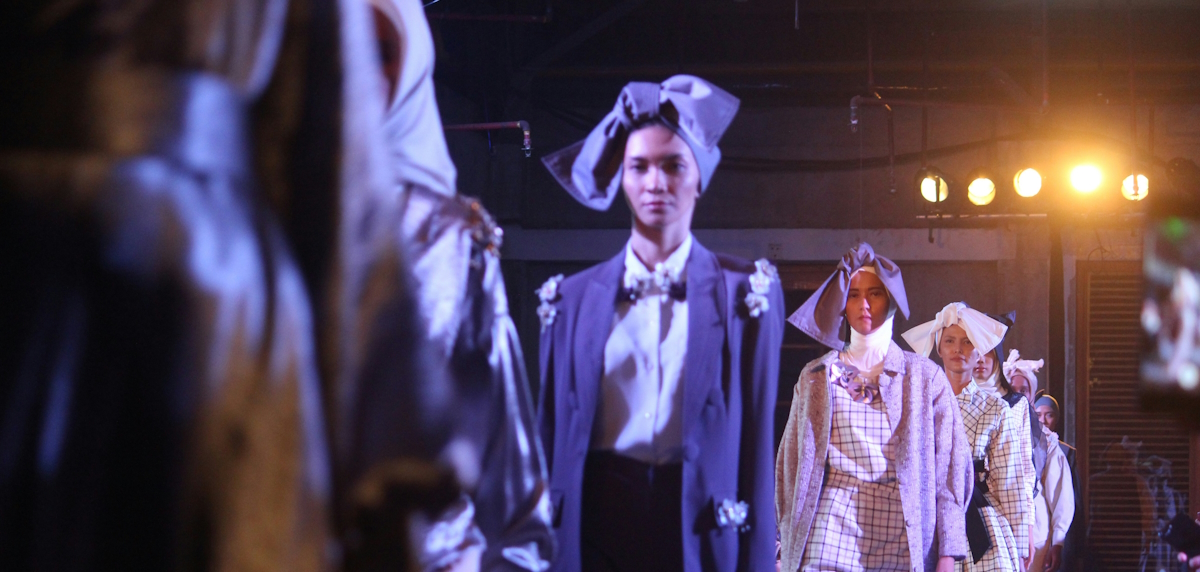Reviving Traditional Fabric as Future Fashion Trends in Indonesia

Traditional fabric is no longer a relic from the past but a power behind the future of Indonesian fashion. The word “Wastra Nusantara,” which refers to various traditional fabrics, has been taken off in the last several years because of the trend. Any fashion student wanting to be successful in the future should consider learning about the influence of traditional fabric in innovative design.
Wastra Nusantara and Modern Fashion Trend
Indonesian traditional fabric revival has happened for around five decades since designers started to utilize it in modern designs.
The late Indonesian designer legend Ramli, whose career took off in the mid-1970s, was among the first to utilize traditional fabric as modern pieces. He incorporated various batik, ikat, and songket motifs in pieces like boleros, suits, and jackets.
Another Indonesian legend, Iwan Tirta, was famous for designing batik shirts used by world leaders attending the 1994 APEC Summit. Other designers, such as Poppy Darsoni, Oscar Lawalata, and Ghea Panggabean, followed suit by incorporating traditional fabric in elegant runway pieces.
Indonesian traditional fabric has also become a hit among international designers. Batik dresses by Nicole Miller and Diane von Furstenberg have been worn by Angelina Jolie and Kate Middleton, respectively. Milo Milavica and Ek Throngprassert have incorporated batik into their collections. Koefia Design School in Italy even incorporates batik in its curriculum.
As shown in the latest Jakarta Fashion Week, traditional fabric has reached a lofty level of creativity and innovation. They definitely have a place in the future design trend.
Why Traditional Fabric is Versatile
Traditional fabric offers versatility in its application and for good reasons.
Indonesia has more than 300 ethnic groups; each has unique variations of certain traditional fabrics and motifs. Even the word “batik” cannot fairly cover all the rich, diverse motifs and colors offered by different batik variations. They open many doors for creative exploration and application for future designers.
This kind of fabric has also found innovations in its production. You can apply different techniques to create motifs in faster, more efficient ways. Traditional motifs can also be applied to various types of fabric, from cotton and silk to wool and cashmere. This opens a new market for traditional fabric to be marketed in colder countries.
Benefits of Utilizing Traditional Fabric
Future designers can get advantages from utilizing traditional fabric in their repertoire. They provide advantages in your career as a designer, which contributes to a lasting, successful career. The advantages include:
- Endless Inspiration
Wastra Nusantara provides endless inspiration, and you can find every combination and possibility under the sun. You can either focus on a specific fabric or open your portfolio for more types of fabric.
- Modern and Classic Directions
Traditional fabric can go both ways. You can apply them in modern designs that follow the trend or stay in the classic, timeless pieces. There are enough spaces for current and future designers to focus on, and they all have huge enough markets.
- Wide Applications of Motifs
One of the most notable elements of Wastra Nusantara is its motifs. The traditional versions have specific forms and lines that become the basis of the motifs. Designers can apply these design elements to create more than just clothing pieces but also other objects.
You can create accessories like scarves, bags, headscarves, belts, shoes, and many more. Fashion designers can even collaborate to create various products with traditional motifs, like perfume bottles, musical instruments, vehicle interiors, furniture items, and many more.
- Easy Adaptation for the Digital Era
Modern and future fashion trends will have a seamless connection with digital technology or trends. Designers could create variations of traditional motifs using design tools or participate in digital fashion exhibitions and shows. Designers could also find opportunities for digital collaborations with other creatives, from product designers to artists and musicians.
Future fashion designers will benefit from fashion schools that promise international collaboration, like BINUS UNIVERSITY. With partners such as the University of New South Wales and Northumbria University, the school offers high-quality fashion design courses and curriculum that prepare students for the future.
Start your fashion journey by focusing on the rich, diverse traditional fabric from Indonesia. With their versatility and beauty, these ancient heritages offer the perfect lane for future designers to thrive.

